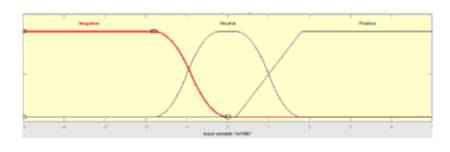


Indian Journal of Science and Technology
DOI: 10.17485/IJST/v14i44.1283
Year: 2021, Volume: 14, Issue: 44, Pages: 3264-3269
Original Article
Siham Abdulmalik Mohammed Almasani1*, Wadeea Ahmed Abdo Qaid2,1, Jamil Abdulhamid Mohammed Saif3, Ibrahim A A Alqubati4
1Assistant professor, Faculty of Computer Science and Engineering, Hodeidah University,Yemen
2Dean Faculty of Engineering and Technology, Future University, Yemen
3Department of Computer and Information Systems, College of Community, University of
Bisha, KSA
4Computer Department, Community College, Najran University, KSA
*Corresponding Author
Email: [email protected]
Received Date:21 July 2021, Accepted Date:20 November 2021, Published Date:24 December 2021
Objectives: To analyze the sentiment and understand Student’s opinions and satisfaction about university, and the services which introduce by it to reach accuracy in evaluation of the university. Methods: The sentiment of students was analyzed and quantified the satisfaction towards the University by building an algorithm using a set of fuzzy rules. This study proposes an integrated optimization method: applying a set of fuzzy rules with two lexicons (SentiWordNet and AFINN lexicon) besides to other parameter. The lexicons in sentiment anlysis are individual words that can be considered as a unit of opinion information. The proposed fuzzy system integrates Natural Language Processing techniques to analyze and quantify student’s satisfaction towards the University by classify the comments into very positive, positive, very negative, negative, or neutral sentiment classes. Findings: with this approach, the accuracy is more 0.891 compared to Support Vector Machines (SVM), Naïve Bayes, The Fuzzy Inference to analyze the sentiment with their own lexicon Opinion Words Lexicon and classified the sentiment into 2 classpositive, negative and The Fuzzy Inference to analyze the sentiment with only SentiWordNet lexiconin evaluation obtained for University evaluation, the evaluation has been verified by simulation results on MATLAB. Novelty: The novelty of this study lies in the formulation of few fuzzy rules to evaluate the sentiment class of tweets, and the proposed model can be adapted to any lexicon.
Keywords: Sentiment analysis; Fuzzy rule; linguistic variables; Students comments analysis
© 2021 Almasani et al. This is an open-access article distributed under the terms of the Creative Commons Attribution License, which permits unrestricted use, distribution, and reproduction in any medium, provided the original author and source are credited.
Published By Indian Society for Education and Environment (iSee)
Subscribe now for latest articles and news.